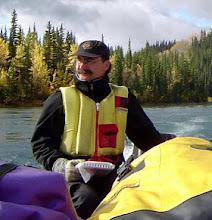On May 23, 2013 the Yukon Transportation Museum launched its new exhibit on the history of flying in the Yukon. The exhibity is the interpretive element of a major renovation of the museum's Bush Pilot meeting room. The original exhibit by Bob Cameron, from the late 1990s, has been masterfully transformed into a magnificent history book - Yukon Wings.
I took on the job of researching and writing the new exhibit. Yukoners Take to the Air / Les Yukonnais prennent leur envol was to develop local stories allowing visitors to find themselves in the exhibit. This approach meant a focus on the people who used planes and the consequences of air connections for Yukon communities. Canadian aviation history is often presented as a space conquering technology, an important theme considering the vastness of the country. The new exhibit however sets flying within the history of place, considering how Yukon people assessed and responded to the opportunities (and threats) afforded by aircraft.
William and the exhibit project started life together in the fall of 2012.
Janna, the Yukon Transportation Museum's Director of Collections & Research (and William's mum), organized the accessibility renovation of the museum's Bush Pilot Room, a major job. She also managed the exhibit development and installation. Janna stands next to the Gibson Girl emergency radio used by many northern bush pilots in the post-world war II period.
 |
| As long as America had the monopoly on the “bomb,” things seemed to be all right. But by 1953 the Communists not only had the bomb, but the bombers to bring devastation to North America. |
Alas, not everything could fit in the exhibit. The privilege of a blog is that I get to include my favorite "not included
on the voyage" element. These items were to help explain the origins of the DEW
Line.
Among the fun things accomplished for the exhibit was the colourizing of several photos from the 1930s. I worked closely with the museum's aircraft restoration specialist who had flown this Fokker Super Universal (now at the Western Canada Aviation Museum) to make the photos convincing.
The exhibit consists of ten attractive panels designed by Patricia Halliday Graphic Design. Each 32" X 48" interpretive panel incorporates a combination of chronological and thematic content reflecting both the evolution of the organization of Yukon aviation and the services used by Yukon people and government.
In partnership with L'Association franco-yukonnaise the exhibit is bilingual, a Yukon first in a non-government cultural institution, and an element of the Association's co-operative approach to Francophone heritage presentation.
The museum is also working to make the building more accessible to seniors and those with disabilities. New dark flooring, high contrast edges, a wider door for wheelchairs and enhanced lighting as well as larger fonts and wheelchair height mounting of panels all contribute to better access to the museum and its stories.
The renovated Bush Pilot room had two openings: in the morning some 60 seniors arrived to see the exhibit (below) and in the evening another larger crowd gathered for the public launch. The YTM can be proud of their success in enhancing accessibility and in broadening their partnerships within the Yukon community.
And I had a great time working in this rich mix of stories, images and people.




.JPG)
.jpg)
e.jpg)
e.jpg)


e.jpg)
e.jpg)
e.jpg)
.jpg)
.jpg)
.jpg)
.jpg)
.jpg)
e.jpg)
.jpg)
e.jpg)
e.jpg)
.jpg)
.jpg)
.jpg)
.jpg)
e.jpg)
e.jpg)
e.jpg)
e.jpg)
e.jpg)
e.jpg)
e.jpg)
.JPG)
.JPG)
.JPG)

.JPG)
.JPG)